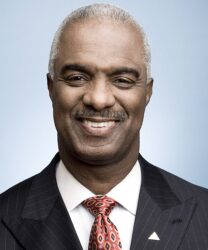When COVID-19 changed the economy, more people became entrepreneurs. The act of creating your own business has an underlying connection between spirituality and entrepreneurship. How does that work? The first element is the business side of the endeavor and its bottom line, otherwise known as ‘show me the money.’ The second motivation is self-fulfillment. Some refer to this element of entrepreneurship as ‘personal satisfaction.’ But the core of the vague term ‘personal satisfaction’ is what is best described as a spiritual sense of purpose. This spirituality is sometimes linked to one’s particular faith tradition, but is not necessarily so. Rather, there is a commonality in this spiritual sense of something greater than ourselves that translates across the boundaries of specific religions. Most importantly, there is tremendous power where this spirituality and business overlap.
Continue reading The Powerful Connection of Spirituality and Entrepreneurship– by Deborah Levine

 218 years of enslavement and 137 years of segregation have left Bermudians struggling with the legacies of intergenerational trauma and economic inequities across our society. A culture of silence and fear arose ensuring that past was suppressed and not talked about. People speak of the need to work together and the need for unity, however, the racial divide is widening, economic disparity between the races continues to grow, and social media is both educating and inflaming passions.
218 years of enslavement and 137 years of segregation have left Bermudians struggling with the legacies of intergenerational trauma and economic inequities across our society. A culture of silence and fear arose ensuring that past was suppressed and not talked about. People speak of the need to work together and the need for unity, however, the racial divide is widening, economic disparity between the races continues to grow, and social media is both educating and inflaming passions. Forest T. Harper Jr. is the President and CEO of INROADS, the nation’s largest non-profit model of salaried corporate DEI internships and corporate and community leadership development for outstanding ethnically diverse talent at the pipeline and mid-career level.
Forest T. Harper Jr. is the President and CEO of INROADS, the nation’s largest non-profit model of salaried corporate DEI internships and corporate and community leadership development for outstanding ethnically diverse talent at the pipeline and mid-career level. Introduction
Introduction